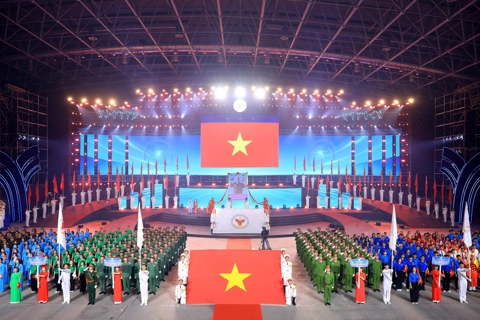Hanoi urged to identify emission sources to improve air quality
Pointing out emission sources is the fundamental and crucial step to tackle air pollution in Hanoi.
Hanoi needs to identify all emission sources to improve air quality in a sustainable manner, Kinh Te & Do Thi quoted Dr. Vu Thanh Ca, a senior lecturer at the University of Natural Resources and Environment, as saying.
Speaking at a recent conference held by the Hanoi Department of Natural Resources and Environment, Ca said that pointing out emission sources is the fundamental and crucial solution to tackle air pollution in the capital city.
"It is necessary to evaluate all potential sources of pollution before conducting the model test, then suggest the scenarios," Ca said.
He added that it is necessary to work out a priority order for treating waste sources and basing on it, develop an action plan to have an accurate roadmap to tackle Hanoi's air pollution.
| Vehicle fumes and construction activities are part of Hanoi's air pollution. Photo: Pham Hung |
For her part, Luu Thi Thanh Chi, deputy head of the Environment Protection Sub-Department under the municipal Department of Natural Resources and Environment, said that the state agency will sum up and propose feasible solutions to include them in a master plan on improving air quality.
Hanoi will release a list of main waste sources in the city by the end of 2020 in accordance with the roadmap.
According to Deputy Director of the Hanoi Department of Natural Resources and Environment Le Tuan Dinh, rapid urbanization has entailed infrastructure construction activities throughout the city.
Besides, Hanoi's population is growing bigger and the number of private vehicles increases parallel. All have contributed to increasing air pollution in the city, especially dust and noise pollution. Signs of air quality degradation have become more evident than ever, Dinh said.
He added that in order to get accurate scientific proofs for assessing the situation, identifying emission sources and effects of air pollution on public health, a scientific research is required as a basis to map out policies and overall solutions to help the city develop action plans to improve air quality.
Evaluating Hanoi's efforts in improving air quality, Prof. Dr. Hoang Xuan Co, an expert from the Center for Environmental Monitoring and Modeling Research under the University of Natural Sciences, said that Hanoi has achieved initial results, especially the active participation of the municipal authorities. However, Hanoi still needs better solutions and models for air quality management.
Scientists have suggested GAINS, a model helping identify measures to mitigate local air pollution and thus global climate change which is implemented in 48 European countries and some Asian countries such as China, Thailand, India, Indonesia, among others. This model helps the governments identify cost-effective policies and technical measures in air quality management.
In the coming time, with the support of the World Bank, the tool of air quality management policy based on the GAINS model will be transferred to the Ministry of Natural Resources and Environment, Hanoi, Hung Yen, Bac Ninh, among others.












